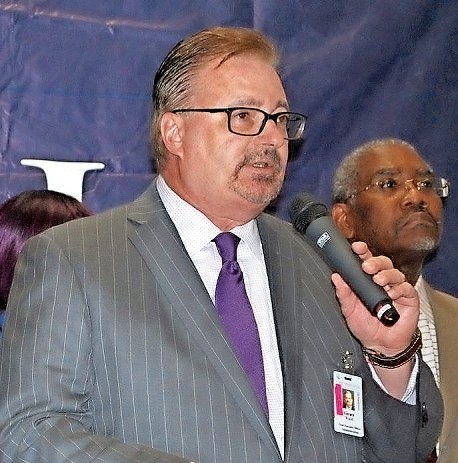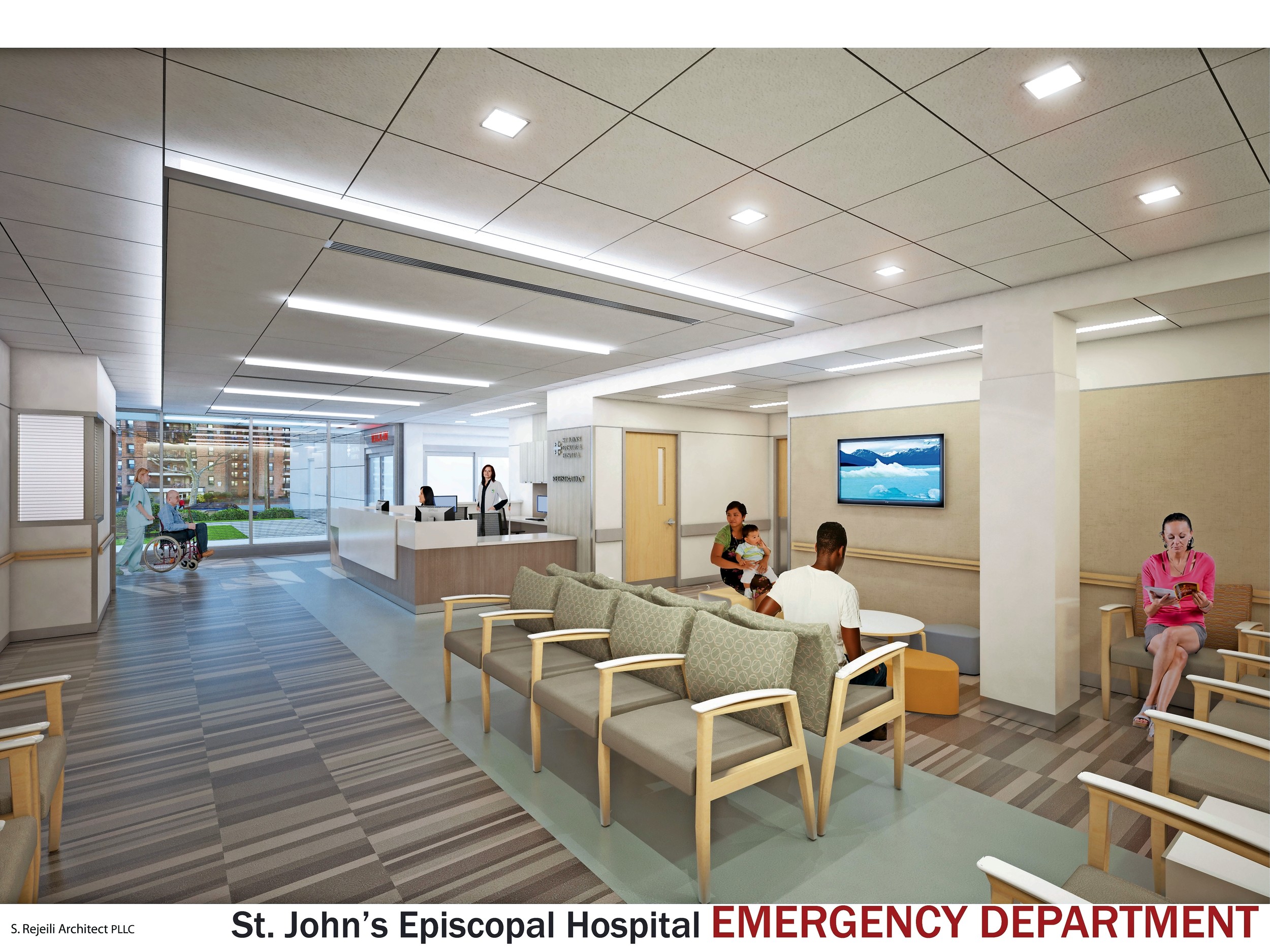Emergency room overhaul moves forward
St. John’s Episcopal Hospital gets more than $10 million in state money
Five years ago, Peninsula Hospital closed, making St. John’s Episcopal Hospital, in Far Rockaway, the only large health care facility on the Rockaway Peninsula. A year later, when the 111-year-old hospital saw a 35 percent jump in the number of patients using its emergency department, St. John’s made plans to nearly double its size.
Now, after an 18-month wait, hospital officials celebrated the approval of a $10.15 million grant from the New York State Department of Health to help complete the renovations, which will include the creation of primary care space in a building right across the street from the Beach 19th Street facility.
In 2013, St. John’s, which also serves the Five Towns, established an off-site ambulatory center at 275 Rockaway Turnpike in Lawrence. The hospital runs a couple of similar sites on the peninsula.
The planned reconstruction of the emergency department will expand the space from 12,500 to 23,000 square feet. Built in 1950, it was designed to treat 15,000 patients per year, but now serves more than 40,000.
The new space will include 19 private treatment rooms, 21 internal disposition areas, six fast-track cubicles and 14 psychiatric treatment areas. The expansion will allow the hospital to accommodate 50,000 patient visits a year. St. John’s has 257 beds, and is typically 85 percent occupied, officials said.
A bevy of elected officials and other community leaders gathered in the hospital’s lobby on July 6 to praise the work of all involved, especially a group called the 1199 Coalition, made up of local politicians, hospital representatives, members of the United Healthcare Workers union and residents who campaigned to obtain the state money.
“This community needs health care services, and we can provide the services this community needs,” said Gerald Walsh, the hospital’s chief executive officer for the past two years.
Chief Operating Officer Christopher Parker said that phase one of the project is 80 percent completed, funded by $4 million from another state grant obtained three years ago. Phases two and three are expected to take 12 months each. The emergency department is projected to be done by this time next year, and the primary care space, in what is known as the BOCES building, is anticipated to be finished in 2019, Parker said.
For State Assemblywoman Stacey Pheffer Amato, a Democrat who represents the 23rd District, visiting St. John’s was a homecoming of sorts. “I was born in this hospital,” she said, adding, “22 years ago,” which drew laughs from the audience. (Amato is 51.) “We have always had this hospital, in good times and in bad times. I love my roots — our toughness, our grit.”
U.S. Rep. Gregory Meeks, a Democrat who represents Inwood along with a large swath of southeastern Queens, noted that a 1977 Berger Commission report on health care in New York state called for only one hospital on the Rockaway Peninsula. “And now there is only one hospital here,” Meeks said, “so the emergency room services are needed, and this hospital’s time has definitely come.”
During a tour of the construction area, Facilities Manager Tom Farzetta explained that what used to be the patient walk-in area will become the ambulance bay, and patients will enter on the opposite end of the refurbished emergency department.
There will be state-of-the-art equipment, including two imaging areas and a CT scanner. As the work progresses, the space will be condensed to ensure that construction does not interfere with patient treatment, Farzetta said.
“This is a great day,” said State Sen. James Sanders Jr., a Democrat who also represents the area. “I take it personally, as a resident of the Rockaways that has used the emergency room. I think we have to do better, and we have done better [with this project].”
Bishop Lawrence Provenzano, head of the Episcopal Diocese of Long Island, which includes Brooklyn and Queens, for the past eight years, described receiving the grant money as a “milestone.” “This is not a culmination of a lot of good work,” he said. “It is the beginning of a lot of good work for the mission of this hospital.”

 48.0°,
Overcast
48.0°,
Overcast 








